Five Tips for Equine Spring Tune-Ups
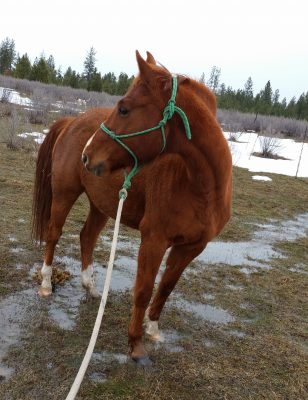
Horses are much the same with the thinking and reacting sides of the brain. This is important to understand especially for children. Little ones need to not just hop on and ride, unless they want to end up with their faces in the dirt. They need to know how horses think and learn. My grandchildren have learned how a horse thinks and safety issues from the time they could walk down to the corral.
Tune-ups are a huge part of setting up the horse to use that thinking side of the brain. As Ray Hunt used to say, “If the horse is right on his feet, he’ll be right in his head.” To get to the horse’s brain, his feet must move.
You move the feet.
Use what is on your property and never mindless lunge. This March the earth was filled with snow, mud, standing and running water and I used it all to get my gelding Cash’s attention on the ground and riding bareback. If they lunge, there are changes of direction, up and down hill, and obstacles. Never do I enlist mindless exercise.
I sensitize horses with all the above and desensitize with what is available: machinery, tarps, inside of our shop both on the concrete and in the back half where we store various odds and ends–working them outdoors and let them rest in, on, or beside scary places and objectI never train with treats or any kind of gimmick. Do my horses get treats? Absolutely, but as a reward and not a bribe. Another human likeness. I don’t bribe children. If they want something they earn it. Plain and simple. I’ve learned hard work provides huge payoffs both for humans and our equine partners.
Here are five tips to tune-ups on the ground to get your horse using the thinking side of his brain:
- On a yacht rope lunge line, these ropes are best because they have weight to them, send your horse in many directions. Set up a course, logs or barrels to jump, tarp to walk over, puddles, teeter-totter, up and down hills or slopes and the like to lunge over. Be creative and use what you or a friend can provide.
- Back, back, back. Want a good stop. Back. Back in circles, uphill, across a tarp, downhill. Again, be creative.
- Side pass along a fence in both directions. And then away from the fence.
- I will walk my horse, me in a straight line, my horse from side to side in front of me. I also use a wagon wheel of poles to lunge my horse in and out of. This teaches strong rollbacks as well as creating good forward motion.
- After whatever creative task I ask of my horse, I desensitize him using ropes, tarps, plastic bags, flags made of old sheetumbrellas, rain slickers. Again, be creative. And if they can follow it, all the better

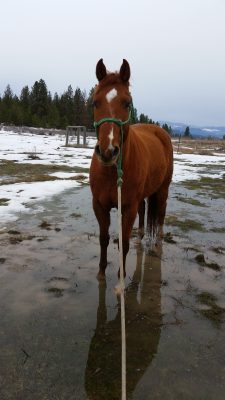
Make the wrong thing difficult and the right thing easy.
And remember a bored horse is a naughty horse! Be an active rider…
Come join me and Gallop into Adventure.

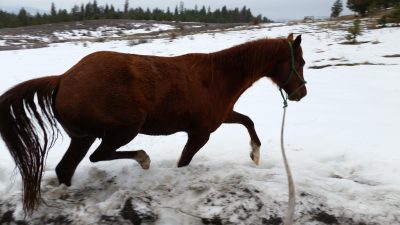
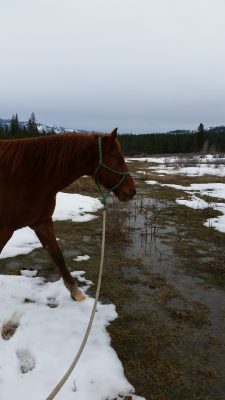
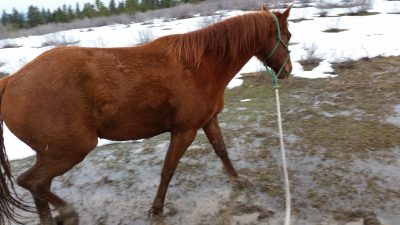
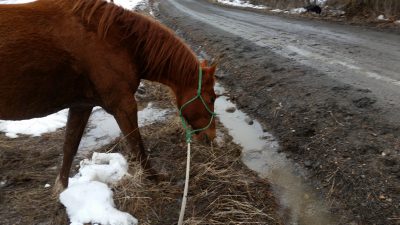
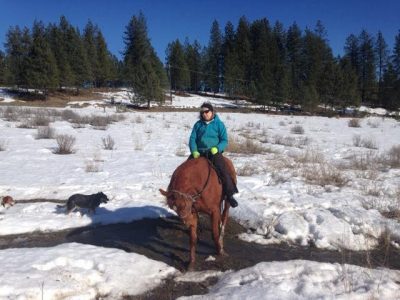
Who knew? Your post has increased my respect for anyone brave enough to, not only ride, but discipline an animal of that size.
Thank you, Judith. There is nothing like learning great training techniques.
Wow, Carmen, this is really interesting. Points I have never thought about. This would be of interest to riding groups, too. Thanks for posting.
Thank you, Mary. Considering these beauties outweigh us by several pounds, safety should always come first. I was taught if the rider can capture the horse’s mind, she’s got the rest of the body. So far that’s been spot on.
I attended the World Cup Dressage Grand Prix and Finals in Omaha this last week, as well as a dressage showcase (where they demonstrated western dressage, which I’d never even hear of) and also watched the competitors practice. I had an all event ticket, and only missed an early morning workshop which I now wish I’d gone to. I’m not a rider, just an equestrian fan, but by the Finals on Saturday I began to get why some scored higher than others, and when the winner Isabell Werth did her ride at the very end, it was just thrilling. So I’m sort of on an equestrian high right now, and loved reading your post, wishing I had my own horse to apply it to! The other day, my husband said that if we move to upstate New York I can ride horses. I was tempted to ask if that meant I could get a horse, but thought maybe I shouldn’t push my luck. If I ever do, I will so be coming to you for advice!
Brigid, What an incredible experience! That is fantastic. Yes, come to me anytime for horse related info and advice!
Great blog. Good information.
Thank you, Melody. I always like to think, safety first!